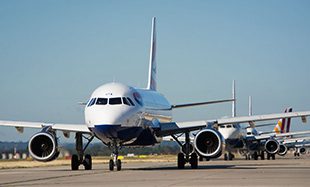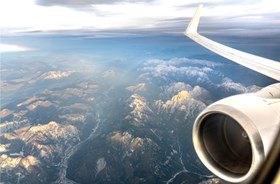
heathrow 175812034119410
The global airline industry is expected to improve its net profit next year to $29.3 billion up from $25.9 billion this year, the International Air Transport Association (IATA) said in its 2020 forecast. While others disagree and expect the world economy to contract as trade tensions continue, IATA thinks 2019 has seen the bottom of the current economic cycle “and the forecast for 2020 is somewhat brighter.”
A slow-down this year forced IATA to revise its original 2019 forecast this summer from $35.5 billion to 28 billion net profit, but for 2020 the parameters are showing positive signs again. Global GDP should be +2.7 percent compared to +2.5 percent this year. World trade is set to grow from 0.9 percent to 3.3 percent as IATA thinks the US elections will have a diminishing effect on tensions. Another positive factor for the airline industry is modest fuel prices of $63 per barrel compared to 65 this year, producing a fuel bill of $182 billion down from 188 billion.
With passenger numbers set to grow 4 percent to 4.27 billion, revenues also by 4 percent to $872 billion, net profit margin by 0.3 percentage point to 3.4, RPKs (demand) by 4.1 percent, and ASK (capacity) by 4.7 percent, the coming year looks brighter in many ways. Having an adverse impact is higher labor and operating costs by 3.5 percent to $823 billion.
North America continues to be the most profitable market but to a lesser extent than before. The airlines’ combined profit will fall from $16.9 to 16.5 billion, or $16 per passenger at a net margin of 6 percent. The main drivers to reduce profitability and margins next year will be a slow-down of the US economy, as well as additional/overcapacity as airlines, will take delivery of their grounded Boeing MAX fleets.
Europe is to improve profitability from $6.2 billion this year to 7.9 next year thanks to an improving economy and airlines wishing to grow capacity only modestly. Some airlines like IAG and SAS recently announced they will actually reduce capacity in 2020. Profit per passenger will be $6.40 or 3.6 percent, but this will not be sufficient for a number of airlines that IATA identifies as being just break even or loss-making. 2019 Has seen many of them collapse.
Asia-Pacific is also set to improve profitability to $6.0 billion from 4.9 billion, with profit per passenger at $3.34 and net margin at 2.2 percent. Helping here is the expected slow-down of trade tensions which should benefit the cargo market which this year has seen a significant reduction (worldwide -3.3 percent) but globally should rebound by 2.0 percent again in 2020.
The Middle East, once the area of double-digit growth, will remain loss-making in 2020 at $1 billion but improves on a -1.5 billion loss this year. IATA sees some economic growth after a very weak 2019 but still, airlines are affected and forced to trade capacity carefully to reduce losses per passengers from $6.84 this year to -4.48 next year.
Latin America is set to produce just a $100 million profit next year after a -400 million loss in 2019, spurred by improving economies in Brazil and Mexico and some rebound in Argentina and Venezuela. Profit per passenger will be $0.42 versus -1.32 this year.
Despite some strong signals of growth in Africa, airlines are expected to remain loss-making at a flat $200 million due to structural high costs and low load factors. Loss per passenger is reduced from $-2.13 to 1.93.
IATA expects airlines to take delivery of 2.206 new aircraft by the end of 2020, taking the worldwide fleet to 31.375 aircraft with an average capacity of 151 seats. These aircraft will execute 40 million scheduled departures or 77 per minute. The arrival of new airliners will improve worldwide fuel efficiency by 2.1 percent, but CO2 emissions will be up 2.3 percent to 936 million tonnes. In 2019, emissions will be up 1.1 percent over 2018 but this would have been 1.9 percent more without the expected fuel efficiency from new airliners.
Views: 2




